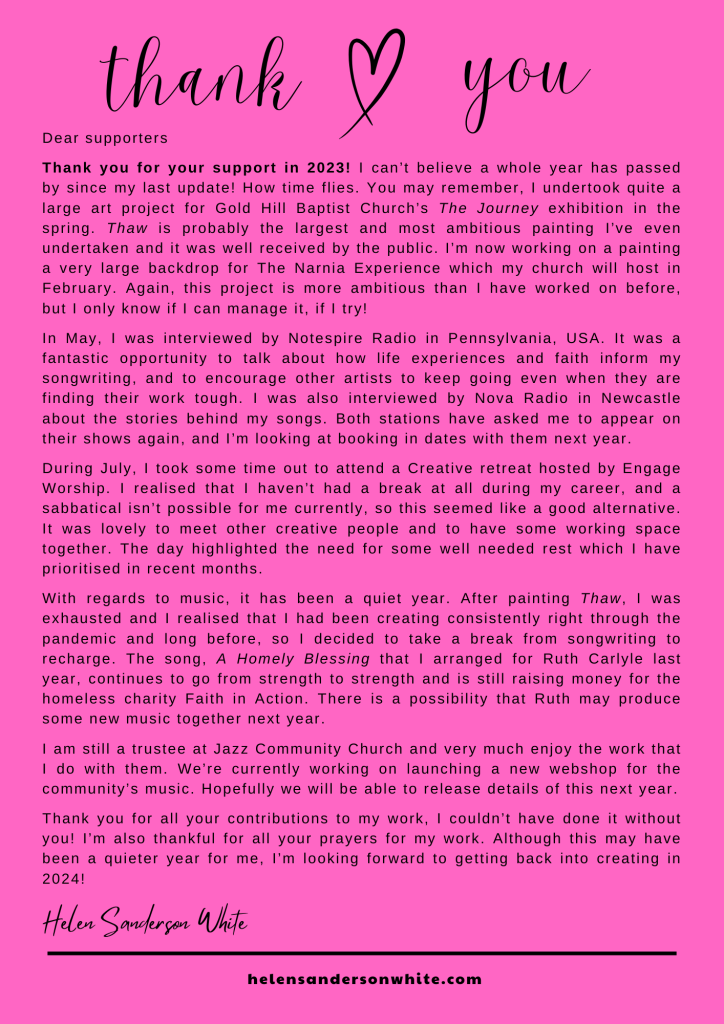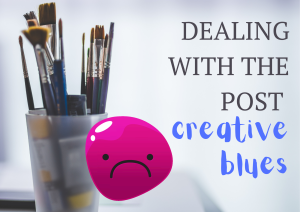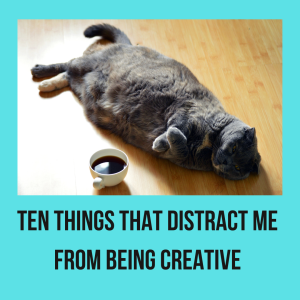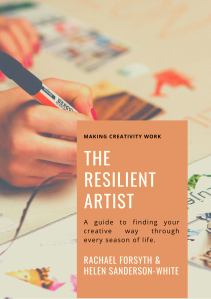A few weeks ago, my church curated The Narnia Experience, an interactive walk through tour with actors telling the C.S. Lewis story of The Lion, the Witch and the Wardrobe. Over 90 volunteers came together to create the experience; offering props, painting, set making and acting skills plus helping in many other areas to create a unique experience.
I painted a backdrop of the White Witch’s ice castle; it is the biggest painting I’ve undertaken, and it took 10 hours to paint. The process started with a line drawing which I projected onto the material and sketched the outline in the bigger proportion design.
There was a slight debacle with the actual painting as I didn’t have enough room at home to stretch the calico across the floor, so I had to roll up the material on one side, paint one end, wait for it dry and then roll the painted side up and paint the other end. One night I literally painted myself into a corner and couldn’t get out of the kitchen. I stood for 20 minutes waiting for the paint to dry before I climbed across the painting to get out. The next night, I painted until I was out of the kitchen door and then realised that I couldn’t get to the oven to cook the dinner! The kids were delighted with take away…
One thing I learnt was that acrylic paint takes much longer to dry on calico; the paint needed to be quite thick to cover the material well and this more than doubled the drying time. Also, I found that drying it with a hairdryer can make the paint crack if the temperature is too hot.
Anyway, here is the finished painting in situ, hanging on the wall ready for visitors…
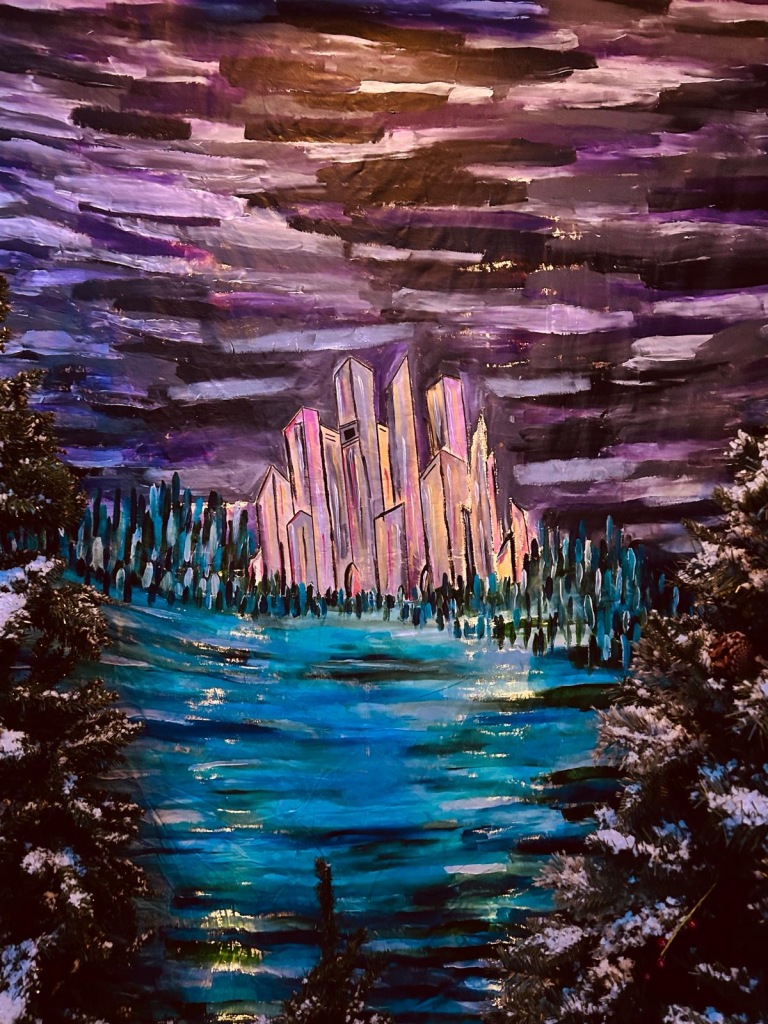
Want to find out more about my artwork, writing and music? Join my mailing list here.
Painting: Narnia Ice Castle by Helen Sanderson-White (Copyright 2024 Helen Sanderson-White. Do not reproduce without permission).
